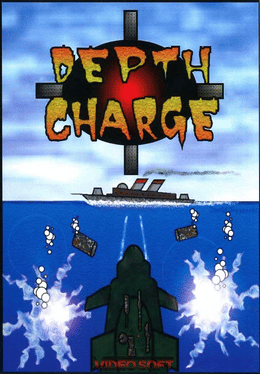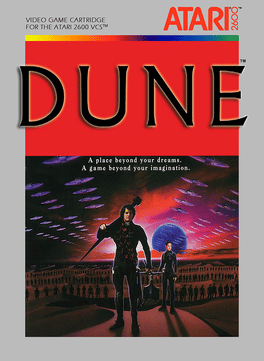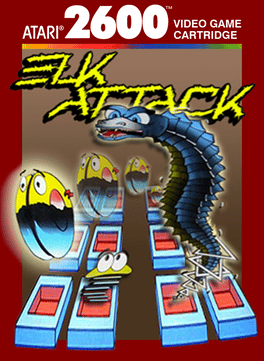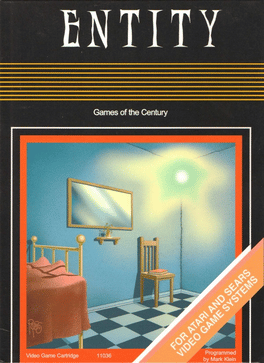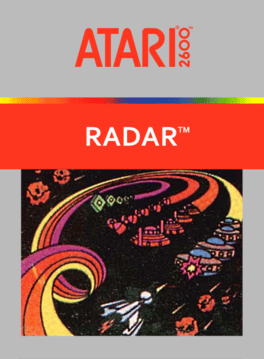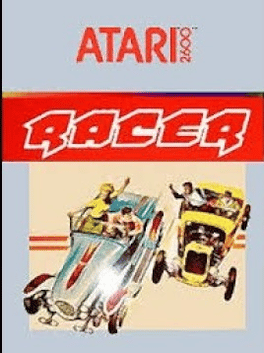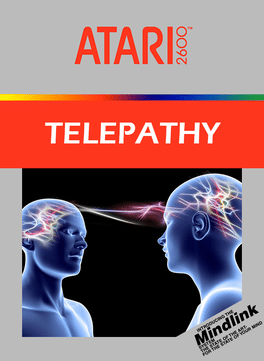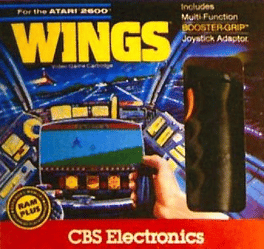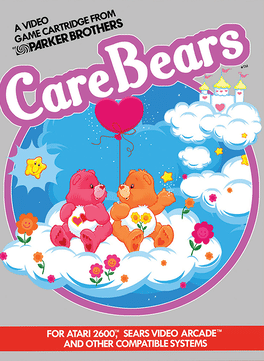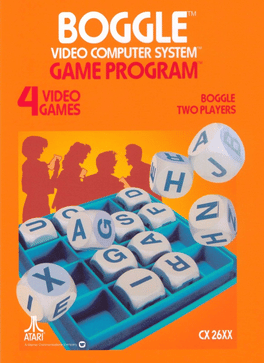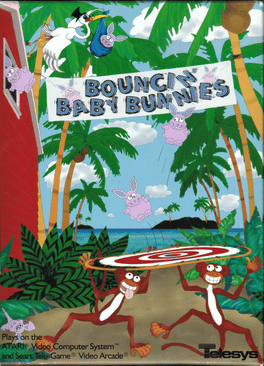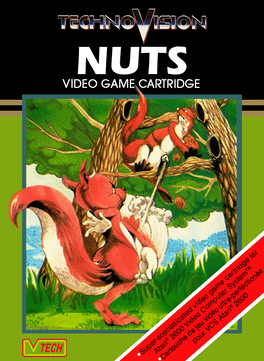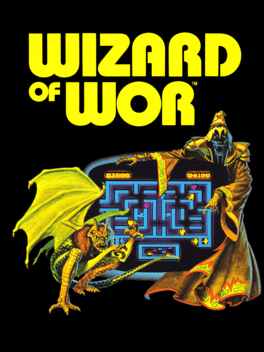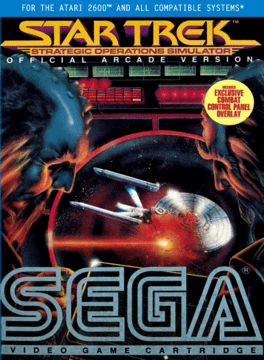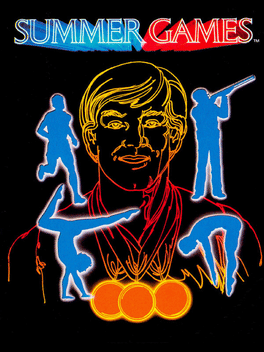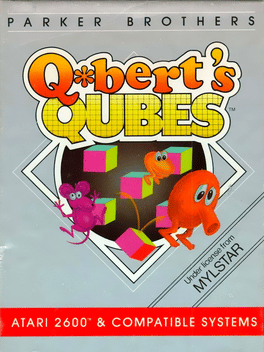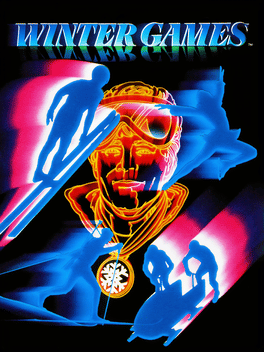Most Popular Atari2600 Games - Page 9
-
Depth Charge
Planned as a pack-in cassette title for Amiga's never released Power Module peripheral and described as 'the first machine-interactive video game', offering head-to-head play, with one player the submarine commander and the other the destroyer captain. Each player would have had their own screen display and set of commands. The Power Module was dropped in favor of the Power Play Arcade carts, and the game’s development only went as far as this version. Catalog description: 'You know he's down there. But where? Your sonar is picking up indiscriminate blips. Then a pattern emerges. You've found him. You launch a round of depth charges over the side, and the explosions rock the ship. You smile confidently and check the scanner: completely blank. Suddenly, there's a blip. And another. Or... You know he's up there. But where...' The cart, box and manual are reproductions from 2010 with permission of Jerry Lawson. -
Cubicolor
You know those cheap little tile puzzles, where you shift tiles one space at a time to try to reform a picture that has been mixed up? That's what this game is like. Move the tiles on the big square (5x5) one at a time, and try to form the pattern shown on one of the little squares (3x3) within the middle 9 tiles of the big square. The game is set up with two big squares for grueling two-player competition. Cubicolor was designed by Rob Fulop of Imagic fame. Supposedly, only 50 were produced, and each cartridge is numbered. The rarity and legend of this game make it potentially the most sought-after 2600 game in existence. -
Dune
Based off the 1984 movie, Dune was to be an action/adventure game along the same lines the classic 2600 game Adventure. Dune was originally started by veteran programmers Bruce Poehlman and Gary Stark before they began working on the 5200 game "The Last Starfighter" (which also went unreleased). Unfortunately Gary and Bruce had only gone through the brainstorming process when work was stopped. However it appears that another programmer may have been assigned to pick up and continue work on Dune. Unfortunately only preliminary coding had been started before Jack Tramiel shut down 2600 game development and fired most of the staff. -
Elf Adventure
A sequel to Adventure? Yes it appears that Warren was tinkering with a sequel to his smash hit Adventure in his spare time while working at The Learning Company which he founded in 1980 after leaving Atari. It’s unknown if Atari actually ordered a sequel or if Warren was doing this on his own and hoping to sell it to Atari. However since Atari was considering calling "SwordQuest: Earthworld" Adventure II (and "Fireworld" Adventure III) the later scenario sounds more plausible. Either way, this prototype has an air of mystery about it. -
Elk Attack
Silly name aside, Elk Attack is really a Pac-Man type game but without a maze. You control a Yo-Yo type machine, which must use its string to latch onto and destroy all the colored blocks on the screen. Along the way you'll encounter strange worm like creatures, which will attempt to disrupt your Yo-Yo. To help you fight the worms there are power squares scattered around the board which when grabbed will render your Yo-Yo temporarily invincible and increase your speed. However unlike Pac-Man touching a worm while invincible will only net you points, and will not destroy of them. Because of this its best to just go about your business and clear the maze instead of hunting down the worms. Elk Attack is a port of the obscure Taito arcade game Electric Yo-Yo! Programmer Mark Hahn named the game Elk Attack as a joke, and probably would have changed the name had it been published. The game was left in its current state. The following is hidden in the code: ELK ATTACK (c) 1987 Mark R. Hahn -
Entity
The Entity is an unreleased 20th Century Fox game based on a horror movie sharing the same name. It's odd that Fox decided to go forward with this project, given the movie's adult themes. This could very well be why Fox didn't release the game, although the game itself has little in common with the movie's subject matter. The Entity was programmed by Mark Kline, who was responsible for two other unreleased Fox games, Pick Up and Look Ahead. The cart, box and manual are reproductions from 2003 with permission of programmer Mark Klein. -
Radar
1983
Radar
1983
Radar is an Action game, published by Zellers, which was released in 1983. Released by Sancho in Europe as Exocet. -
Telepathy
Telepathy is one of two known prototype games that were developed for Atari's failed Mindlink controller. The Mindlink was a headband that player wore on his head and plugged into the joystick port. The idea was that the Mindlink's sensors would pick up any facial movements or muscle twitches the player would make. Atari actually claimed that the Mindlink could read the player's thoughts. The problem was that the Mindlink didn't work very well in initial test runs, and even when it did work players would complain of headaches and dizziness from twitching their face all day. After disappointing test results, the Mindlink controller was wisely canceled. Telepathy was actually developed as a demo to show what kind games the Mindlink could do. This "demo" is made up of seven different action screens held together by a loose "mine" theme. Thankfully Telepathy is playable without the Mindlink controller (unlike Bionic Breakthrough) by pressing the joystick button. It's unknown if Atari was thinking of releasing Telepathy -
Wings
Wings is an unreleased game developed by CBS Electronics and programmed by Stuart Ross. Wings is an air combat simulation that uses a control scheme of two joysticks. The first joystick controls your plane and the second controls access to your weapons. It was originally assumed the game would use the CBS Booster Grip controller, due to a prototype box that shows Wings packaged with the controller. Wings features a fairly sophisticated control panel (for a 2600 game), containing seven different gauges that let you keep tabs on your fuel, power, airspeed, altitude, radar, horizon, and compass. Two different versions of the prototype binary exist, one NTSC and one PAL. The NTSC version of the game is dated four months earlier than the PAL version, and is noticeably different. The NTSC version is playable, but is missing the enemy planes and has numerous bugs. The PAL version is more complete, featuring a nice Wings logo and enemy planes, but also contains a bug that causes the game to crash if you continually pull ba -
Care Bears
The game concept in Care Bears revolves around grabbing the "Tummy Icon" from each of the Care Bears as they slowly fell down the screen. Once all the icons were collected the player would have to arrange them in a certain order before time ran out. Although this may sound rather easy, one has to keep in mind that the game was geared toward young children, so things had to be kept simplistic. Care Bears made it to the beta testing stage before the marketing department decided to stop work on the game citing that the market for childrens games was diminishing, and the gameplay was too dull. Therefore it was decided that all further development on the game was to be stopped. According to programmer Laura Nikolich, part of the reason Care Bears was killed off, was that the marketing department really didn't know what they wanted. The Care Bears product line was aimed at the 8 and under age group, but marketing wanted a more action oriented game designed for older kids. Although Nikolich described the game as being alm -
Boggle
Boggle is an unreleased game for the Atari 2600 programmed by David Crane while he was still working at Atari. In Boggle, which is based on the popular word game of the same name, you must form as many words as possible from a random 4x4 grid of letters. The 2600 version of the game is for two players only, and each player can form a maximum of eight words (likely due to memory constraints of the 2600). The game appears to be fairly close to completion, although there are some glitches, such as all the letters not appearing in the grid right away when you start the game. Still, it's an interesting prototype and it's unknown why Boggle was not completed and released. -
Bouncin' Baby Bunnies
Zounds! Coco the crazy monkey is in quite a pickle this time! Dr. Storkus Z. Hopperdropper (Storky, to his friends) has gone a bit mad, and is dropping baby bunnies from the sky! In fact, it's raining bunnies! What's a crazy monkey to do? Get help, that's what! Coco and his brother Haggis are out to catch the bunnies and bounce 'em to safety. It's monkey business, for sure, and they need your help, so grab that trampoline, and start Bouncin' Baby Bunnies!! A copy of the nearly complete game surfaced in the collection of a former Telesys employee in 2007. According to programmer Alex Leavens, Bouncin' Baby Bunnies is based off the old Bugs Bunny cartoon, where the stork mistakenly delivers Bugs to a gorilla family and they think he's their baby. The only known prototype of Bouncin' Baby Bunnies seems to be fairly complete, but still needs some tweaks and bug fixes. The game didn't get released because of the collapsing game market of 83/84. According to the former Telesys employee: 'Bouncin' Baby Bunnies came too la -
Nuts
1983
Nuts
1983
You’re a hard working Squirrel. All year you’ve been storing food in your treetop home. Suddenly, when you’re away, the Wily Weasel steals it all. Don’t let him get away with it! Throw nuts at him!. Knock him off the branch! Recover your goodies! It’s exciting! It’s crazy! It’s NUTS! It’ll drive you right out of your tree! -
Wizard of Wor
1982
Wizard of Wor
1982
Wizard of Wor is an arcade shooter played from a top-down point of view. The player controls a warrior who is trapped in a dungeon. The goal is to earn as many points as possible by shooting the numerous enemy creatures which wander about the maze like corridors. The creatures wander about at various speeds, may shoot darts at the player, and some even have the ability to disappear temporarily. At the bottom of the screen the player has a radar which can be used to locate creatures that are invisible. When the the player completes a maze, a Worluk sometimes appears. This creature moves rapidly and will only be on the screen momentarily. If the player destroys the creature before it escapes, the next dungeon will become a double score dungeon and all creatures will be worth twice as many points. Occasionally the Wizard of Wor himself may appear! He moves quickly and can teleport around the maze. If they destroy him, the player will earn a large amount of points. The game may be played by one player or two players -
Star Trek: Strategic Operations Simulator
1983
Star Trek: Strategic Operations Simulator is an arcade action game where you take control of the Starship Enterprise. Your mission is to save the Federation from NOMAD! Before you get a chance at destroying NOMAD, you'll have to battle your way through ten levels (each consisting of multiple rounds). In each round you may encounter Klingon fighters, deadly anti-matter saucers, asteroid fields, and deadly meteors, all of which are capable of depleting the Enterprises energy. The game ends when your energy supply has completely run out. To fight these dangers, the Enterprise is equipped with an unlimited supply of phasers and a limited supply of photon torpedoes. Each round also contains one or more starbases; if you dock at a starbase, some of your supplies (such as energy and torpedoes) will be replenished. The game is played from two points of view; the top of the screen contains a third person view of the Enterprise (along with the ships gauges), and on the bottom of the screen is a first person point of view. -
Kangaroo
1983
-
Summer Games
1987
-
Q*bert's Qubes
1985
Q*bert's Qubes
1985
Q*Bert's Qubes is the sequel to the game Q*Bert and features similar gameplay, but is now in three dimensions. Once again your goal is to change multicolored blocks to a target color, but now you must make sure all three visible sides of the blocks match the target color. You control Q*Bert on the playfield of blocks; Q*Bert changes the colors by jumping to a block which will cause it to rotate in the direction of his jump. Unlike the original game, you don't need to change the colors of the whole playfield, but rather need to form straight line(s) of the target colors, and when you do you can move on to the next round. Of course, to make this task more challenging are a variety of creatures (including a giant rat!) that chase you around the playfield. Each creature is a different color, and if it lands on a block where the top face is the same color then the creature falls off of the playfield, but if Q*Bert gets caught by a creature then a life is lost! As the game progresses, more creatures chase Q*Bert and add -
Winter Games
1987
